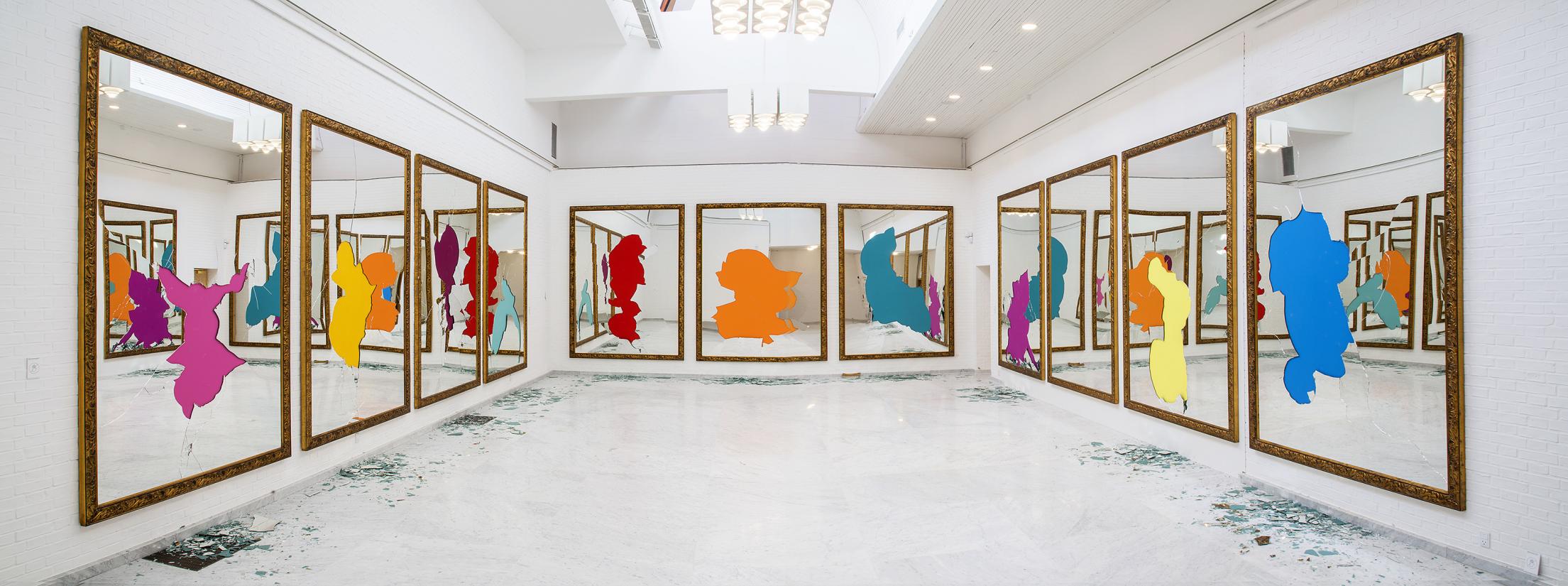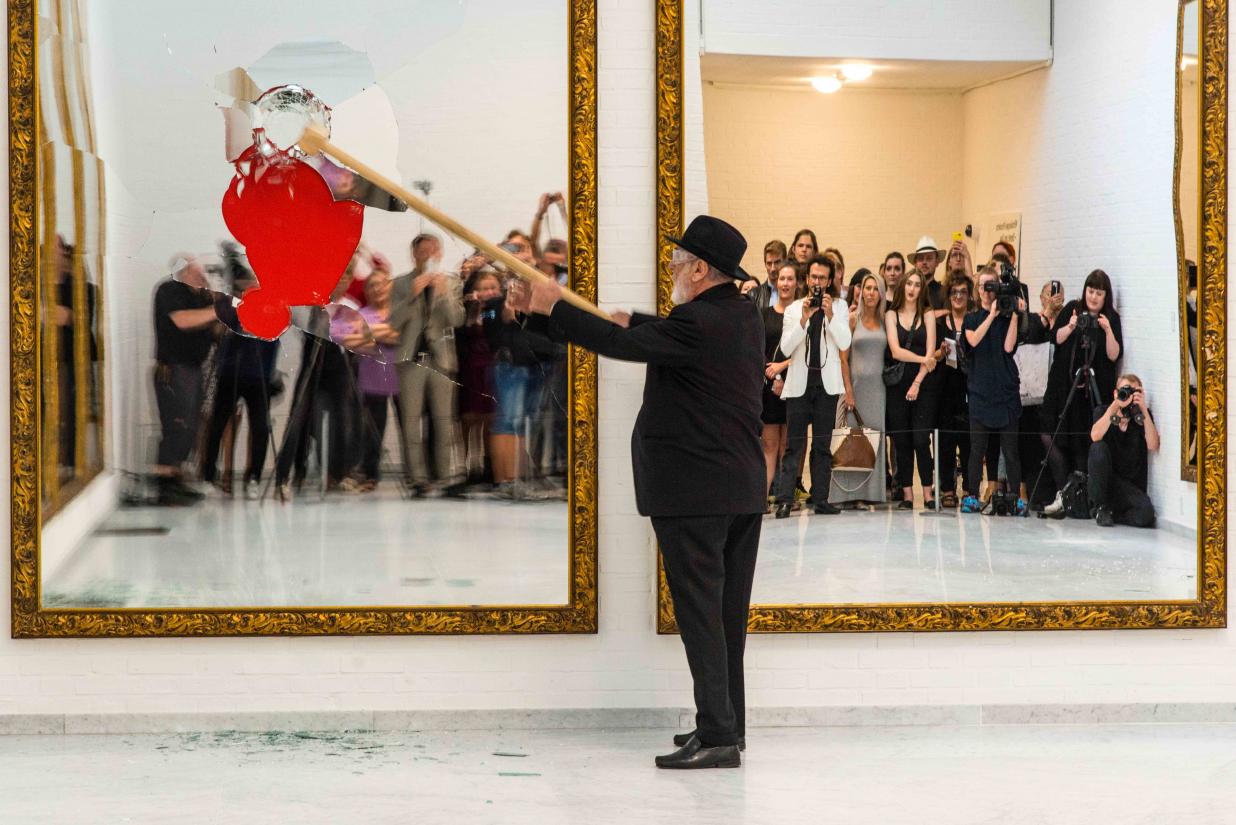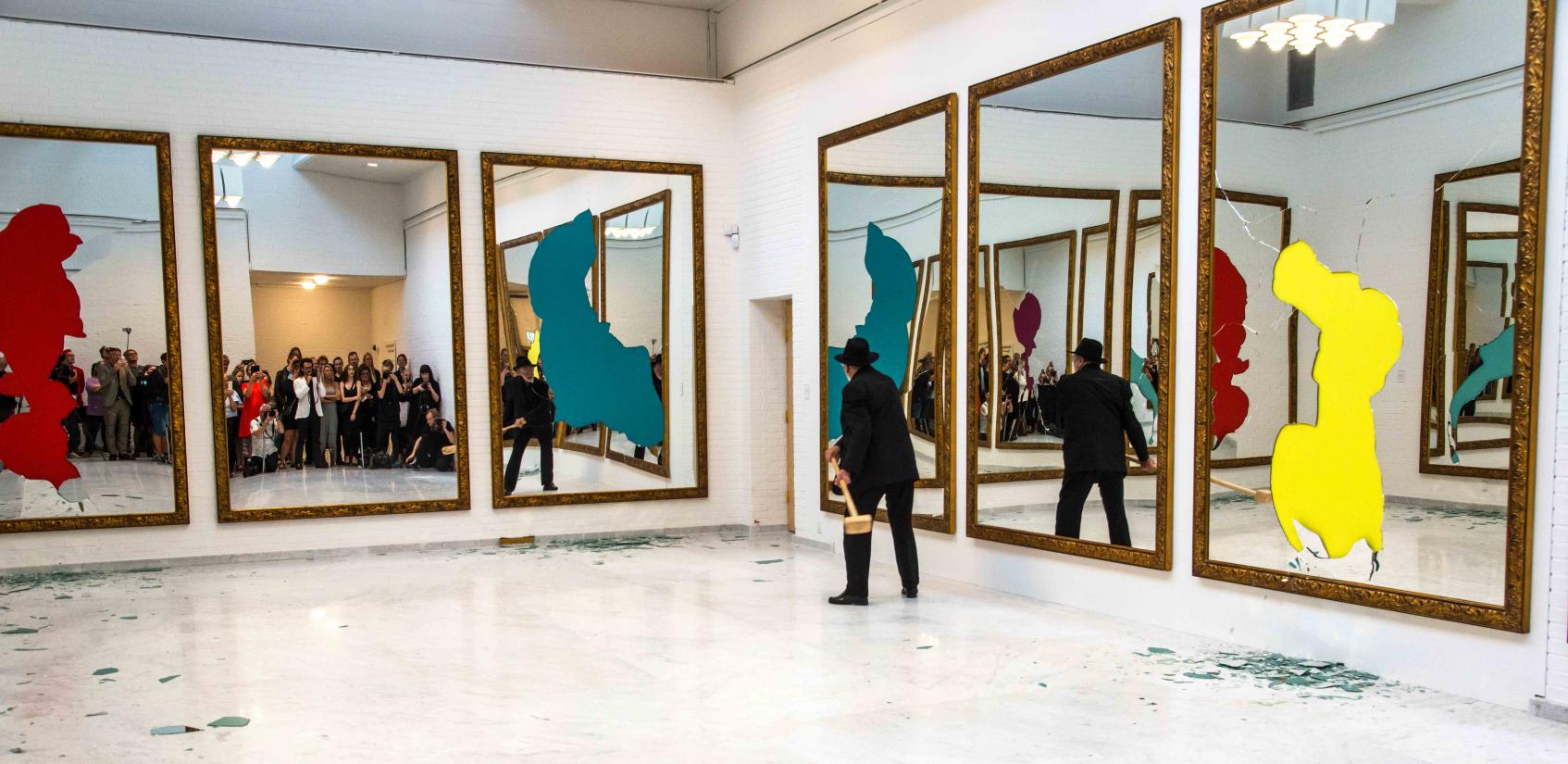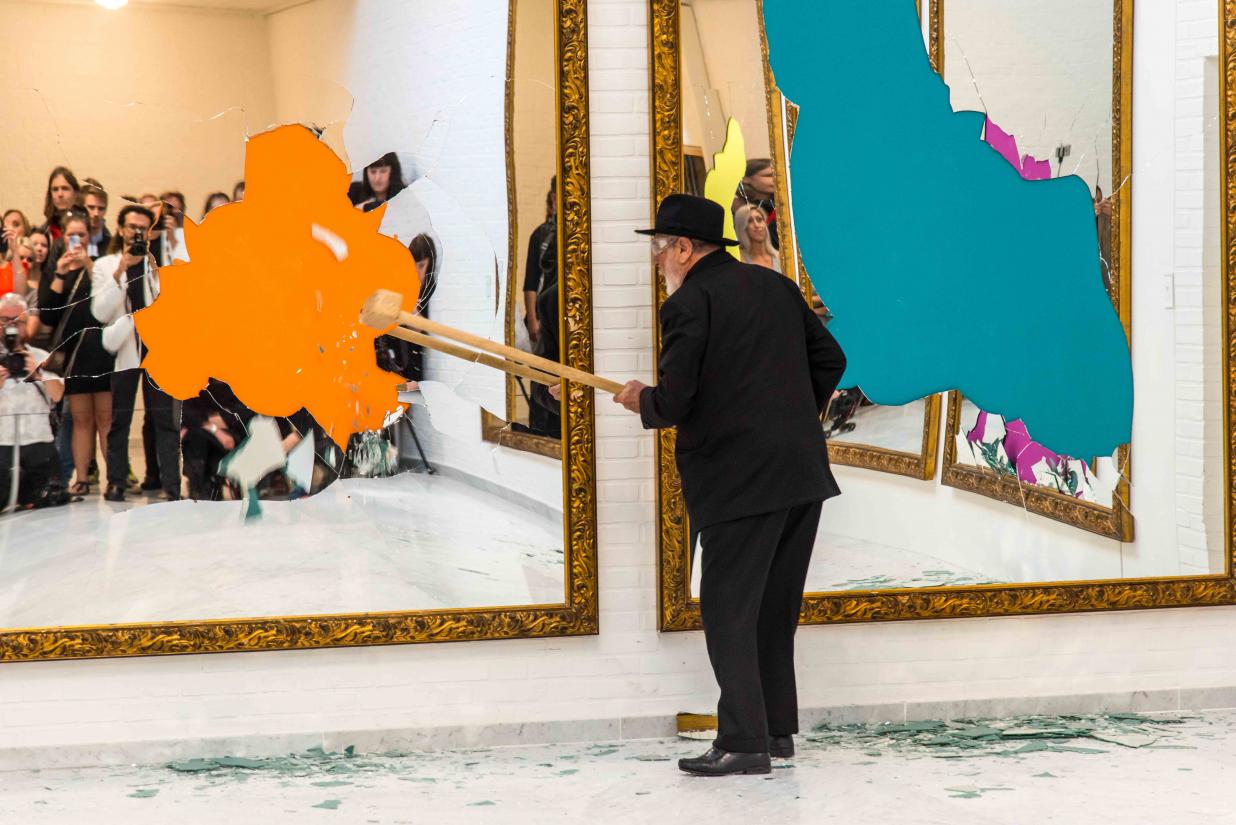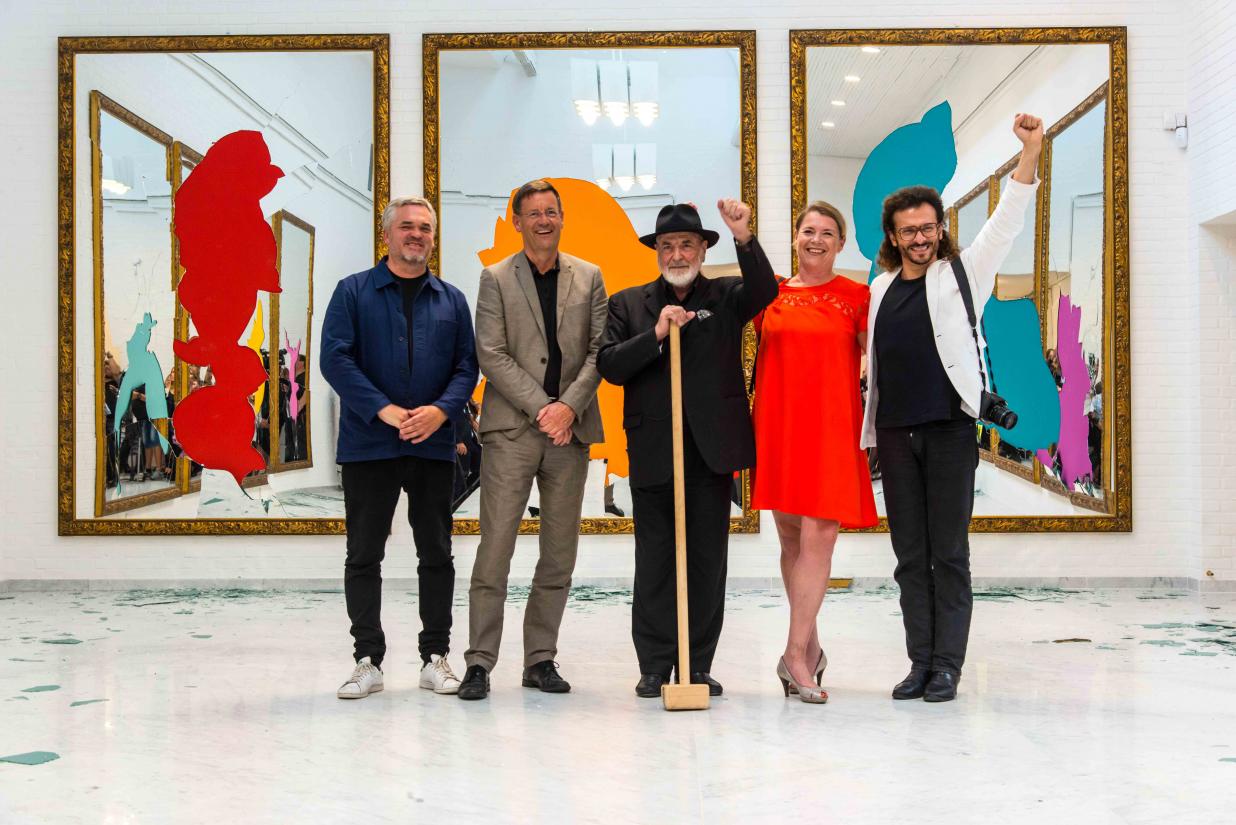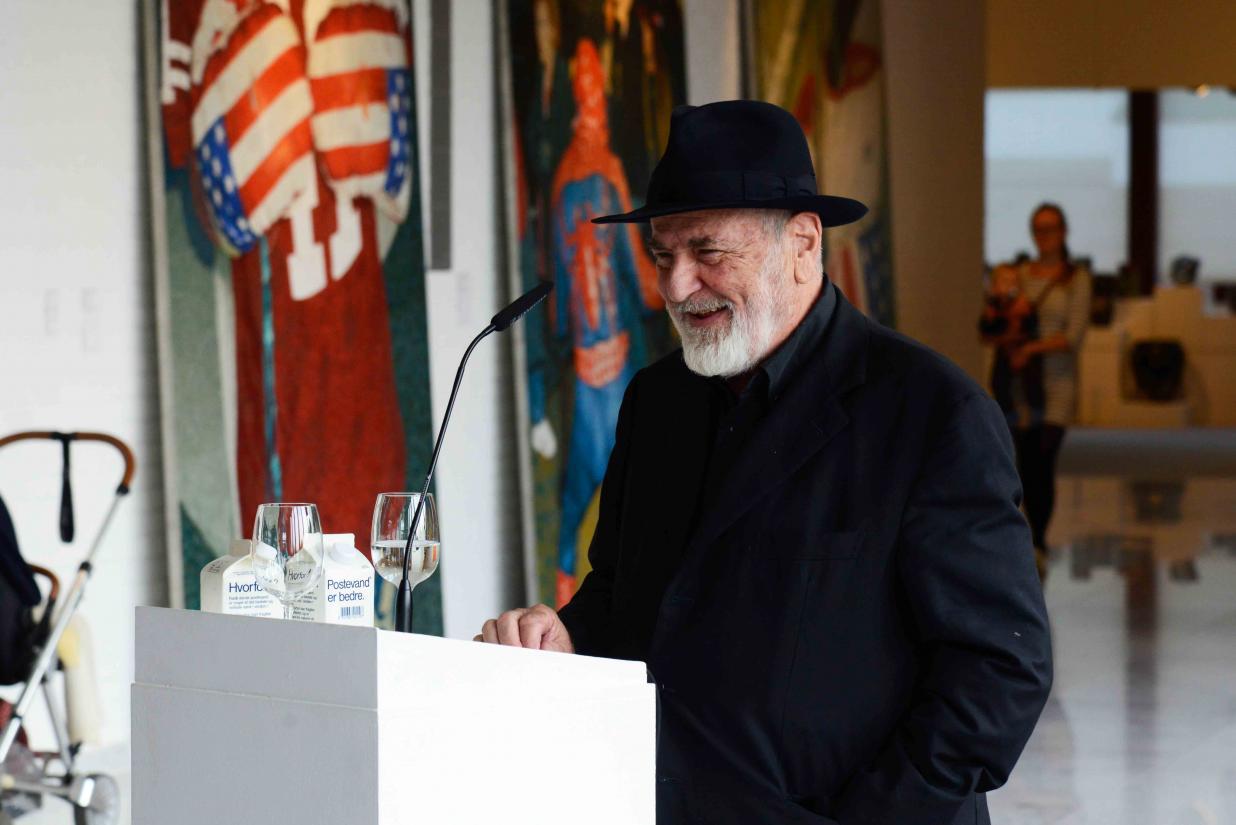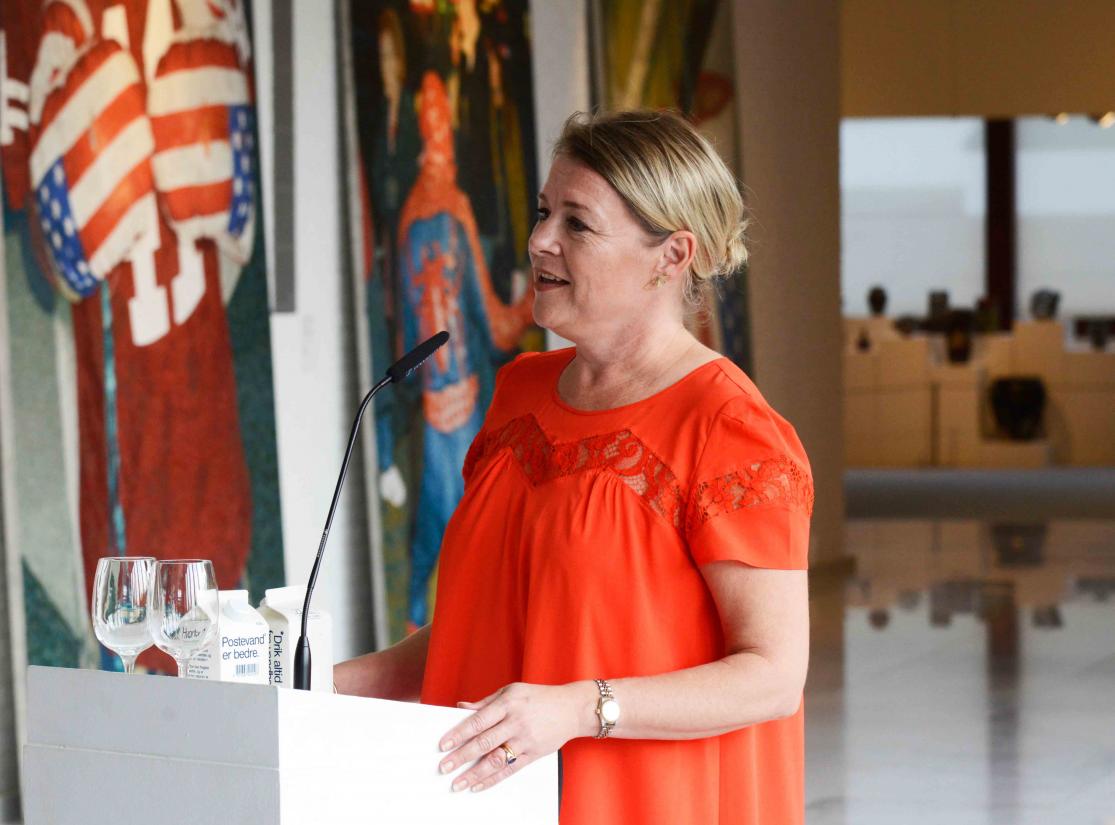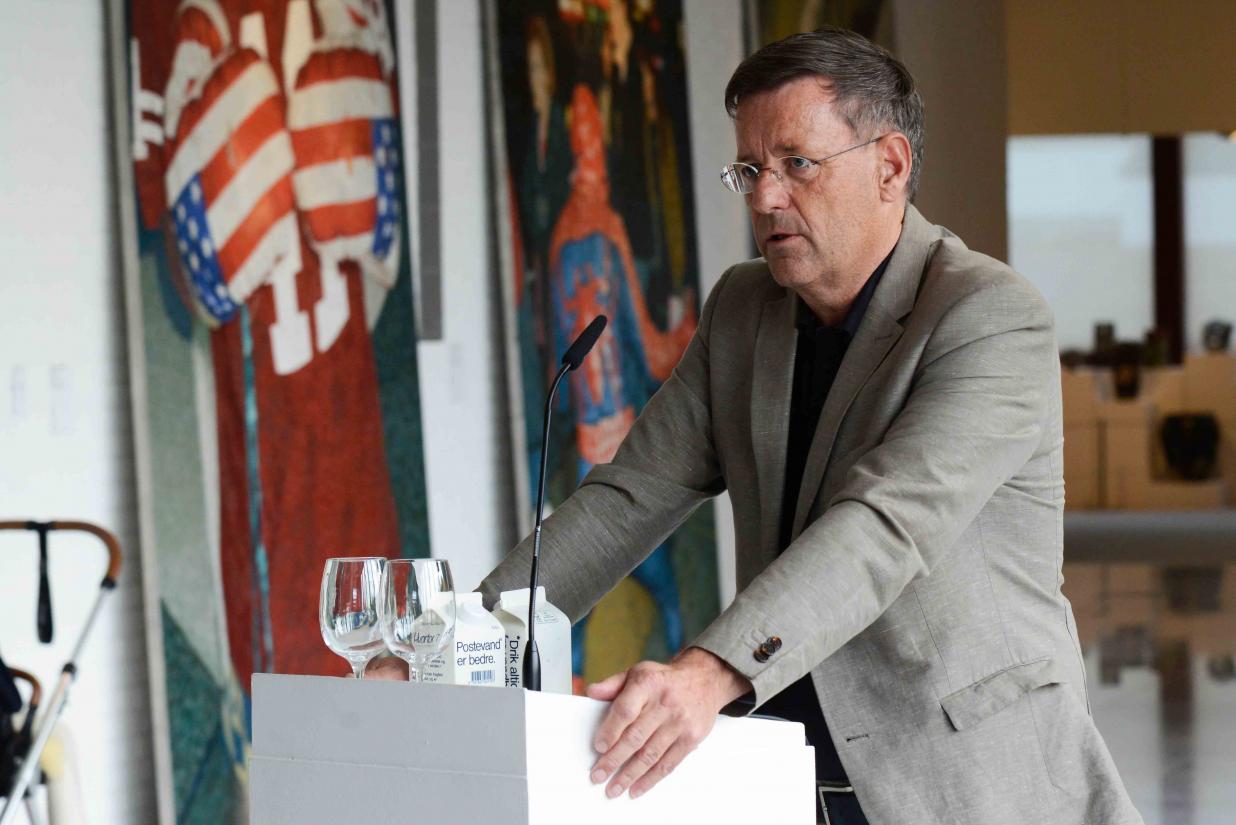For the inauguration of the work Eleven Less One, the audience was invited to attend a dramatic performance by Pistoletto. Present were the chairman of the New Carlsberg Foundation, Karsten Ohrt and director of Kunsten, Gitte Ørskov who opened the festive event with speeches, after which Pistoletto began to crush 10 out of the 11 mirrors which were hung in rows along three walls of the“Lille Sal” in Kunsten. The act transformed the broken mirrors into contrast-rich collages with surfaces varying between monochrome sections and sections that reflect the surrounding space – and, not least, the museum visitors.
The mirror as an infinite image generator
Since the 1960s, Pistoletto has explored the phenomenological properties of mirrors in his artistic practice. The Italian artist is fascinated with mirrors, because they are merely a surface that reflects its surroundings and thus creates the illusion of a three-dimensional space. This trompe l’oeil effect is one that the mirror shares with the painting. Pistoletto says:
‘The mirror reflects our physical reality, but in itself, it has no visible appearance. It is the reality in front of the mirror that is reproduced as a virtual reality inside the mirror. A painting is similarly virtual – it can create the illusion of a three-dimensional space – but the mirror takes this quality one step further, as it is capable of reproducing all existence visually. To me, the mirror is infinite.’
Pistoletto, in other words, conceptualizes the mirror as an ‘image generator’ that indiscriminately reproduces anything that is placed in front of it. By smashing the mirror, the artist breaks up the seamless whole, revealing the materiality of the mirror. ‘When I smash the mirror, the shards become physical elements, and the broken pieces are left on the floor. However, I do not destroy the mirror; rather, I multiply it. The pieces reflect one another,’ he explains.
The social jigsaw puzzle
Pistoletto sees the broken shards as an allegory for the social dimension: ‘The broken pieces of the mirror are an image of society. Everybody is simultaneously an individual and part of a larger whole, and when we make eye contact, we see both ourselves and a projection of the other’s mind. The mind is a projection of our capacity for social relationships and collective action. Democracy is like a jigsaw puzzle – what tears us apart can also pull us together,’ the artist concludes.
During his inauguration speech, chairman Karsten Ohrt, also emphasized the mirror’s historical and aesthetic role in culture. He said,
‘The mirror is an important element in the artist’s studio. This is evident in the thousands of artists’ self-portraits. Today, the mirror is often represented by a smartphone on a selfie stick; many young people take pictures of themselves in all sorts of situations, and like Narcissus, they become infatuated with their own reflection and forget to the sense the present moment.’
